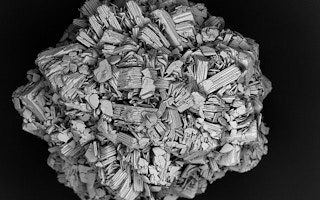Rare earth metals, hard-to-find materials, with unfamiliar names such as lanthanum, neodymium and europium, are used in wind and solar energy projects, but dwindling supplies could hinder a roll-out of low carbon technologies and slow China’s shift away from coal power.
These compounds, which are highly toxic when mined and processed, also take a heavy environmental toll on soil and water, posing a conundrum for policymakers in China, the world’s biggest producer and consumer of rare earths.
In 2012 the Chinese government named the city of Ganzhou, in the southeastern province of Jiangxi, a “rare earths kingdom”; even though at that time its rare earth reserves were already almost depleted.
According to a rare earths white paper issued by the State Council News Office in 2012, the reserves to extraction ratio for rare earth elements in southern China was 15. In other words, if mining continued at the existing rate, those reserves rich in medium and heavy rare earth elements (MHREEs) would only last for another 15 years.
Three years later and 6,000 miles away in Paris, 190 countries signed the historic Paris Climate Agreement, including plans to introduce a greater share of wind and solar power in a “decarbonised” future. But few of the delegates gathered in Paris seemed to realise how important one small south-central Chinese city would be to achieving this target; as almost all the clean, smart and low-carbon technologies are reliant on rare earths.
This prompts the questions: do we have enough rare earths to build the clean and smart future we’re imagining; can China, supplier of 90 per cent of the global rare earths over the last 20 years, meet expected growth in demand; and what will the environmental consequences be.
Rare earths kingdom
Chinese geologists working in Ganzhou fifty years ago discovered ion-absorbing rare earths; a discovery that restructured the world’s supply of rare earths. China replaced the US as the biggest producer of rare earths and Ganzhou rapidly became the world’s largest producer of MHREEs.
Despite rapidly depleting reserves Ganzhou still accounts for more than half of all rare earths produced in China. A visit to the mines and industrial parks of Ganzhou gives no sense of a glorious “kingdom”. It’s a scene of devastation: crude open air mines and smelters, and rough muddy attempts at restoring the landscape. It’s a sight hard to associate with the environmental technologies that rare earths are used in.
Water in and around the mining area is severely polluted. According to China Environmental News, the water supply for 30,000 people in the county of Longnan alone has been affected by rare earth mining, with 40,000 mu (6,589 acres) of farmland seeing reduced yields or complete harvest failure.
Over a decade of excessive extraction has left the surface water in the Zudong mining area, China’s biggest source of ion-absorption rare earths, with ammonia and total nitrogen levels far above safe standards; while groundwater is nowhere near up to minimum drinking water standards.
In April 2012 a cross-ministry investigation headed by the Ministry of Industry and Information Technology found 302 abandoned rare earth mining sites in Ganzhou, with 97.34 square kilometres affected. It would take 70 years just to deal with the 190 million tonnes of mining waste left behind.
Black market
China’s government says the country “meets 90 per cent of the world’s demand for rare earths, but has only 23 per cent of global reserves.” In the early 1990s China overtook the US to become the world’s biggest producer and exporter of rare earths and since then has virtually become a monopoly supplier, with some rare earth products produced only in China.
This story was originally published in Chinadialogue under a Creative Commons’ License and was republished with permission. Read the full story.








